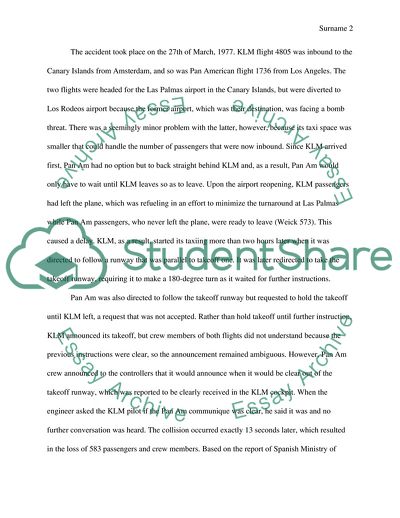Cite this document
(The Tenerife Air Disaster, Instructional Problems, and Possible Case Study Example | Topics and Well Written Essays - 1500 words, n.d.)
The Tenerife Air Disaster, Instructional Problems, and Possible Case Study Example | Topics and Well Written Essays - 1500 words. https://studentshare.org/design-technology/1863314-preventing-aviation-accidents-through-proper-instruction
The Tenerife Air Disaster, Instructional Problems, and Possible Case Study Example | Topics and Well Written Essays - 1500 words. https://studentshare.org/design-technology/1863314-preventing-aviation-accidents-through-proper-instruction
(The Tenerife Air Disaster, Instructional Problems, and Possible Case Study Example | Topics and Well Written Essays - 1500 Words)
The Tenerife Air Disaster, Instructional Problems, and Possible Case Study Example | Topics and Well Written Essays - 1500 Words. https://studentshare.org/design-technology/1863314-preventing-aviation-accidents-through-proper-instruction.
The Tenerife Air Disaster, Instructional Problems, and Possible Case Study Example | Topics and Well Written Essays - 1500 Words. https://studentshare.org/design-technology/1863314-preventing-aviation-accidents-through-proper-instruction.
“The Tenerife Air Disaster, Instructional Problems, and Possible Case Study Example | Topics and Well Written Essays - 1500 Words”. https://studentshare.org/design-technology/1863314-preventing-aviation-accidents-through-proper-instruction.


